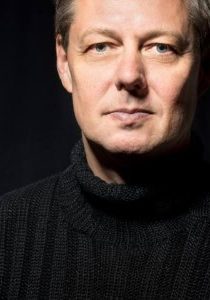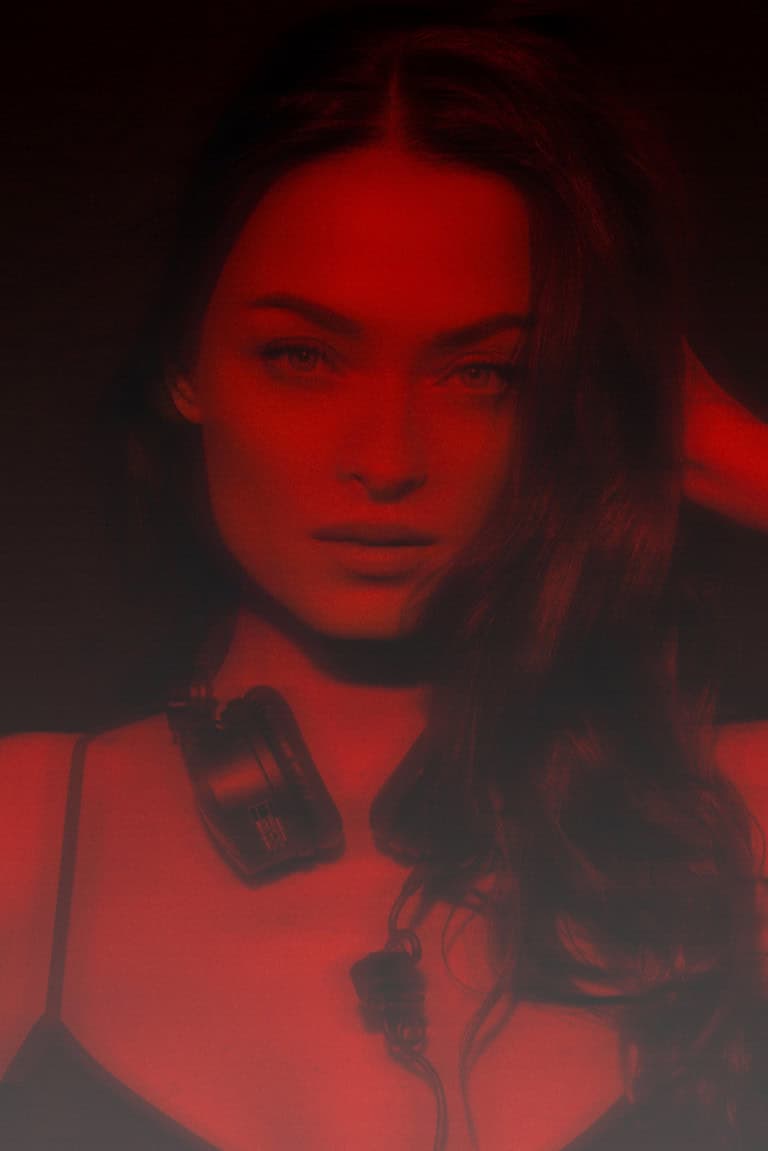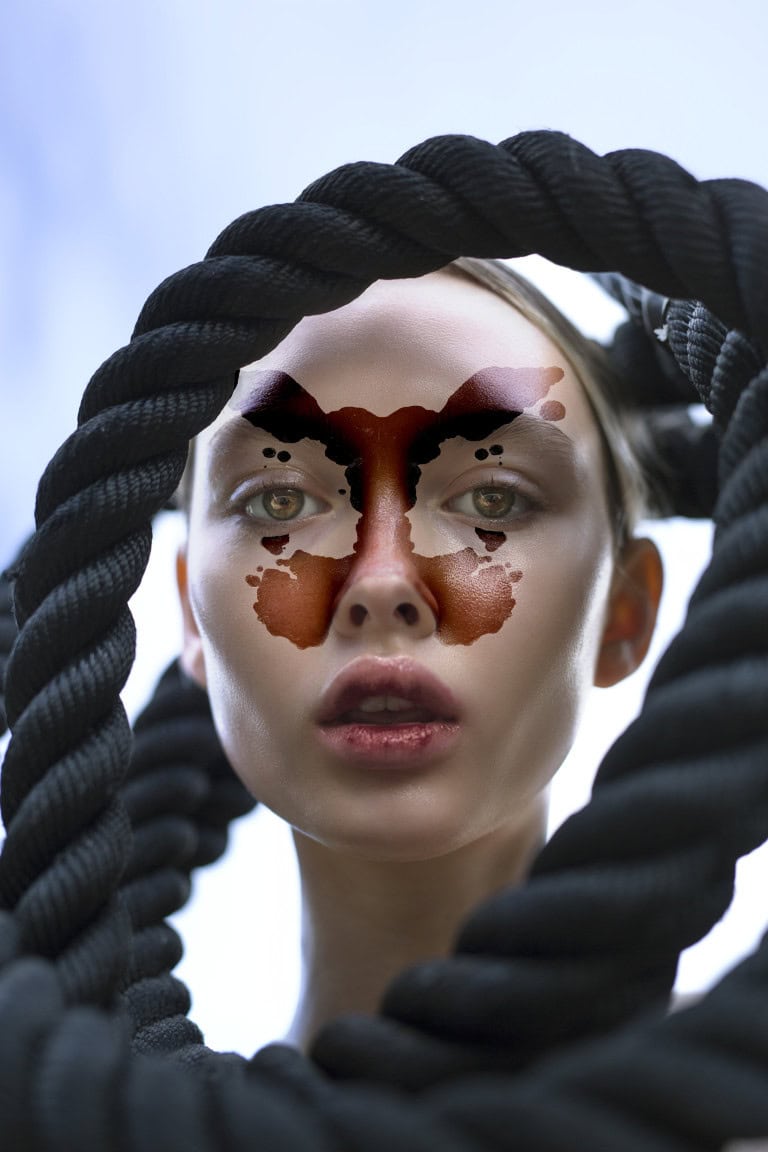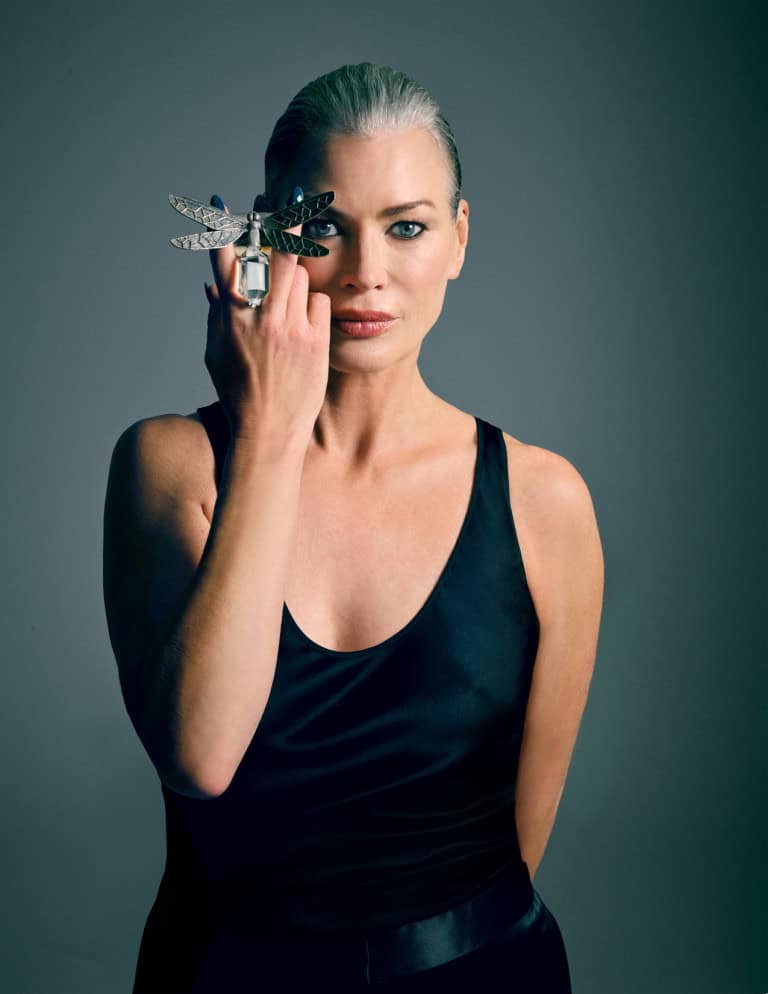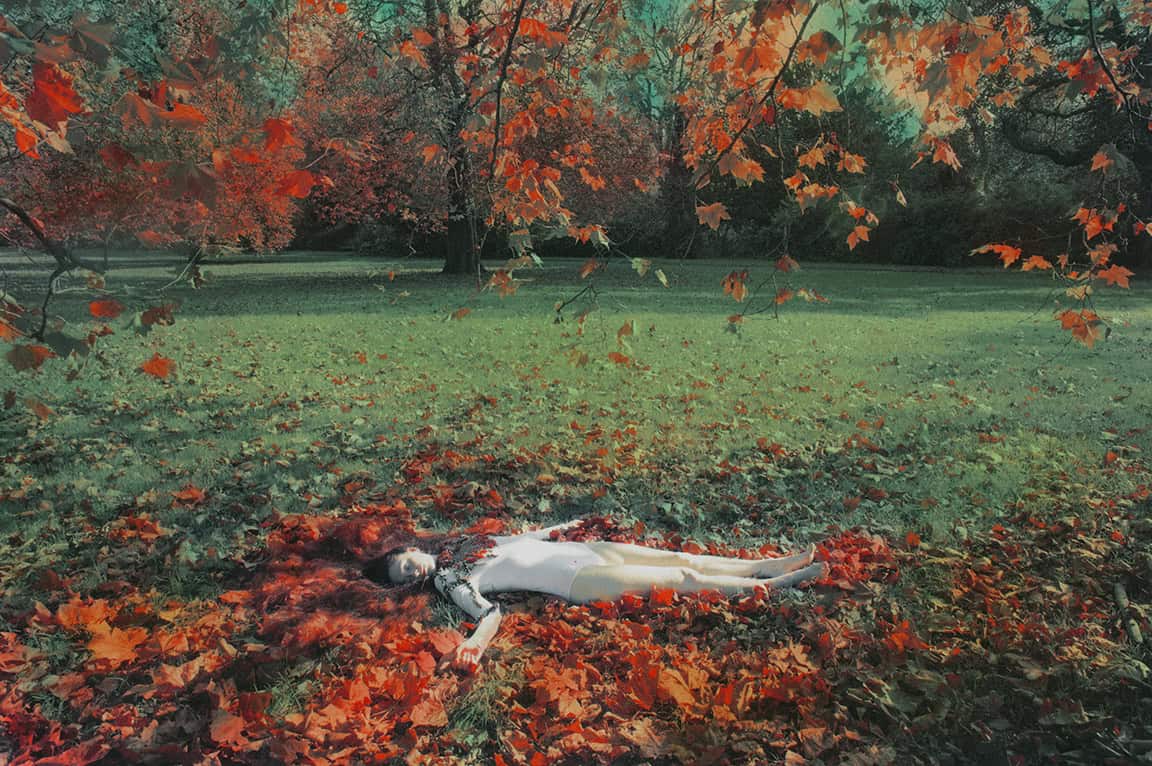
SHAE DETAR, ARTICLE DU NUMÉRO BLISS
Le succès de Shae Detar en tant que créatrice d’images a une beauté bienveillante. Au fil de notre conversation, une artiste résolument déterminée s’est imposée. Elle a mené des recherches obsessionnelles, défendu sa vision et s’est consacrée à la création avec la joie d’un enfant. C’est un mélange auquel tant de personnes aspirent en début de carrière. Cependant, les créatifs sont souvent laissés pour compte par les pièges des clients commerciaux, ainsi que par les manœuvres du monde de l’art et des critiques des écoles d’art. Même les commentaires dans un espace public de plus en plus critique sont intimidants. Pourtant, Shae a persévéré dans sa démarche dans cet environnement. Elle s’y est épanouie, y a tourné le dos. Enfin, elle retrouve le chant des sirènes de ses racines et la reconnaissance qui semble ne jamais la laisser en paix.
Créativité précoce : des magazines à Milan
Enfant, Shae était scolarisée à domicile. Le théâtre musical était un exutoire social et créatif. Shae a déclaré : « C’était créatif, mais pas des arts visuels. Je faisais toujours des collages avec des magazines. Je prenais iD et The Face, ainsi que des magazines japonais trouvés dans l’East Village (New York). Je les découpais, je les collais, puis je peignais dessus. » Passons maintenant à Milan, où Detar travaille comme mannequin. Sa colocataire, qui se préparait à entrer à Florence, a vu ses journaux remplis de collages et lui a demandé pourquoi elle n’allait pas aux Beaux-Arts. Elle a rapidement présenté à Shae le travail de David Carson et du magazine indépendant avant-gardiste Ray Gun .
École d’art, vêtements vintage et un tournant
Intriguée, elle s’est inscrite à l’École d’arts visuels où Carson enseignait. Shae a dit : « Tu sais, on y va, tout simplement. » Parce que j’avais 19 ans, tu sais ? J’y suis allée pendant deux ans, mais tout ce que je faisais, je voulais le faire à la main. Je faisais ces grandes peintures, très collages. Je les repense aujourd’hui, et elles sont horribles, mais ma mère les affiche encore. Je me suis dit : « S’il vous plaît, enlevez-les. Elles sont vraiment horribles. » Je n’aimais pas travailler avec du texte, des polices de caractères et tout ce qu’on fait en tant que graphiste. Évidemment, j’aurais dû me dire à l’époque : « Oh, je devrais faire les beaux-arts », mais je n’y étais pas vraiment. Je me disais juste : « Oh, je suppose que je ne suis pas graphiste. » Alors j’ai abandonné mes études, et c’était la fin de mes études. Puis je me suis mariée, et je ne savais pas quoi faire. Du coup, j’ai vendu des pièces vintage pendant six ou sept ans. Et puis mon chien est mort.
La naissance d’un photographe
Le déclencheur du changement dans nos vies vient souvent de sources inattendues. Après la mort de son chien, Detar a tout quitté, réalisant qu’elle devait décider quoi faire de sa vie. Bien qu’elle et son mari ne sachent pas vraiment pourquoi, il lui a suggéré la photographie. C’est ainsi qu’elle a commencé à faire des recherches en ligne et a appris son métier. Cette capacité à se concentrer et à faire des recherches approfondies lui a été précieuse tout au long de sa carrière.
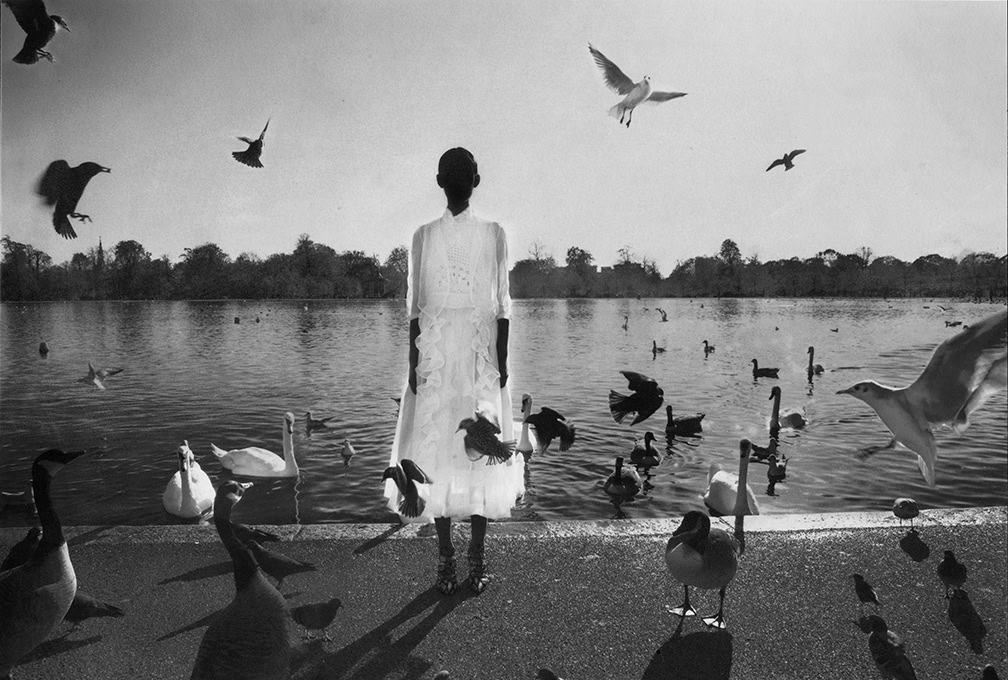
Shea avait 30 ans, elle était cool et son travail était plébiscité par les blogueurs, rois et reines d’Internet à l’époque. Des agences de blogs lui ont proposé de collaborer et elle a créé des campagnes pour COACH, entre autres. Mais au fond, elle ne souhaitait pas une carrière de blogueuse ni les revenus qui en découlaient. Jusque-là, elle réalisait des autoportraits, mais elle a réalisé qu’elle devait prendre son travail plus au sérieux. Malgré sa peur de faire perdre du temps à ses sujets, elle a commencé à photographier d’autres personnes. Le monde commercial l’a de nouveau remarquée et, moins d’un an plus tard, l’entreprise de mode Aritzia lui a demandé de réaliser un panneau d’affichage avec ses photos peintes. « C’était mon premier travail, et j’avais vraiment peur, car je ne savais pas comment m’y prendre. Mais je me suis dit : “D’accord”, et c’était vraiment ça. »
Un chemin difficile
Bien que son parcours professionnel paraisse extraordinaire, comme pour beaucoup, il n’a pas été aussi simple. Il lui a fallu deux ans et demi de recherches, d’applications et d’échecs pour trouver des procédés à la fois satisfaisants pour Detar et suffisamment archivistiques pour être partagés avec les galeries, les collectionneurs et les clients. Elle a commencé à travailler avec la photographie argentique, mais la voie traditionnelle de la colorisation des photographies à l’huile a replacé son travail dans un contexte historique. Shae a donc abandonné le tirage à la gélatine argentique et a exploré une infinité de combinaisons de papier et de peinture, cherchant une façon de peindre des photographies à la fois pratique et satisfaisante.
La recherche a été compliquée par le désir de travailler à grande échelle, ce qui a posé des problèmes. Malgré la beauté du grain d’un grand tirage analogique, la peinture rongeait souvent le papier, perdant ainsi une grande partie de l’image. En comparaison, les tirages numériques avaient toujours été trop nets à son goût, mais la combinaison judicieuse de peinture et de papier, suivie d’un léger vernis, a atténué cette impression, donnant une image cinématographique.
Étant donné que son travail avec Photoshop numérique occupe une place mineure, il n’est pas vraiment la méthode prédominante pour créer l’œuvre finale. Sa technique est beaucoup plus naturelle, l’échec et l’imperfection étant intégrés au processus créatif de Shae. « L’année dernière, j’ai dû accepter ce que les gens obtiennent lorsqu’ils veulent des photos peintes à la main. Ils subissent les imperfections du processus. Du genre, ce ne sera pas un produit fini, “c’est parfait”. Alors, il fallait que je me libère de cette pression. »
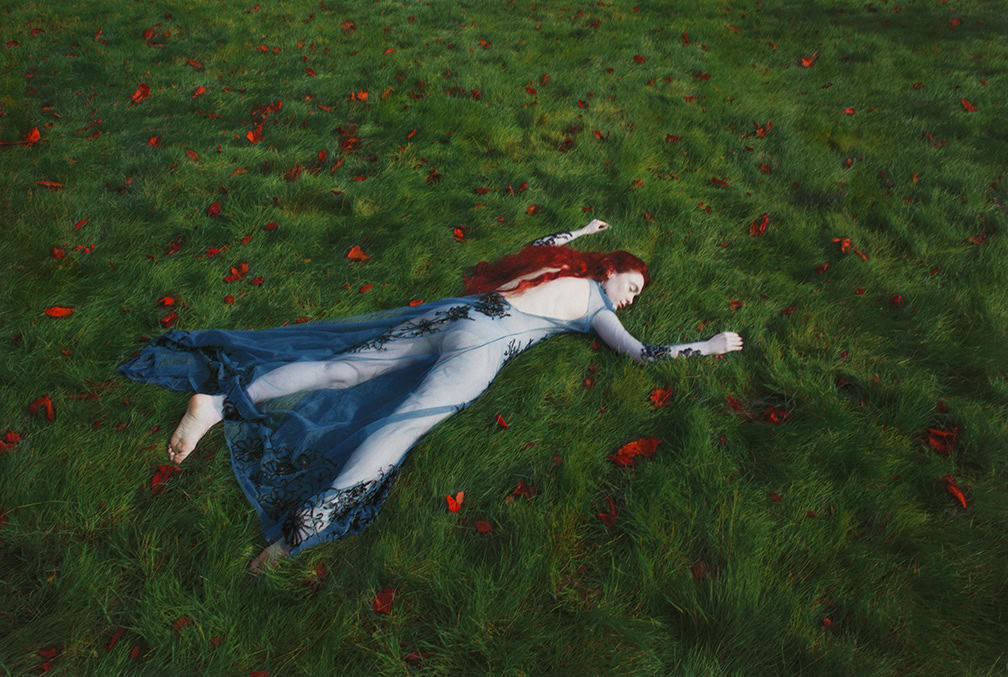
Une approche enfantine de l’art
Si la méthodologie qui en résulte rappelle un peu ses débuts de collage de magazines dans l’East Village, c’est bel et bien le cas. « J’essaie de garder cet esprit enfantin. Quand on regarde des enfants créer, ils ne réfléchissent pas trop. Ils créent simplement quelque chose qui dit : “Regardez ça !” Puis ils vous le montrent et ils en sont très fiers. J’essaie vraiment, honnêtement, de conserver cet esprit. Quand je photographie, la planification est en préproduction : “Où est mon lieu de tournage ? Qui sont mes modèles ?” Ce genre de choses. Une fois sur place, je ne veux pas réfléchir à ce que je vais faire. Je veux juste le faire. Et quand je rentre à la maison, je fais le montage, j’imprime plein de choses pour ne pas avoir peur de faire une erreur, et c’est tout. J’essaie d’être comme un petit enfant. »
Une notion romantique
Étant donné la prépondérance des images assumées dans les galeries d’art et sur Instagram, Shae dégage une certaine idée romantique de sa création, qui se reflète dans l’œuvre finale. Cela s’étend également à ses modèles. Ses lieux de tournage sont soigneusement étudiés, recherchant des lieux « intemporels et épiques », mais méconnaissables pour ses amis et collègues. De plus, son casting est moins structuré, car elle ne souhaite pas être influencée par les personnes qu’elle photographie.
Bien qu’ils soient traités avec respect, ses sujets sont comme une toile vierge lorsqu’ils s’intègrent au décor ou à la scène. Cela lui laisse la liberté d’explorer, d’accepter ses erreurs et de peindre selon ses envies lors des dernières étapes de production. Elle veille à en informer ses modèles à l’avance : « Je veux juste que vous sachiez, acceptez-le, que vous pourriez finir par ne plus avoir de visage. Vous pourriez être jaune. Vous pourriez être violet. À ce stade, je ne sais pas ce que je vais faire. »
Une carrière atypique en vogue
Vous serez peut-être surpris d’apprendre que parmi ses clients figuraient Vogue Italie, Vogue Pays-Bas, Marie Claire Italie, Interview Magazine, ID, Vice, Dazed, Grazia, The New Yorker, Elle UK, Marie Claire, NY Magazine, Forbes, Nylon et Teen Vogue, entre autres. Ses photographies ont été exposées dans le monde entier. Son travail a notamment été présenté à l’exposition « The Female Gaze » de Vogue Italie à Milan. C’est lors d’une table ronde avec Chiara Bardelli Nonino, rédactrice en chef de Vogue Italie, et quelques autres photographes que Shae a réalisé qu’elle n’était pas une photographe au sens où beaucoup le sont.
Je dois dire une chose, c’est sûr. Je n’aime pas la prise de vue. C’est l’une des raisons pour lesquelles j’envisageais d’abandonner la photographie pour me consacrer à la peinture. Je me suis dit : « Je ne suis clairement pas photographe, car je n’y prends même pas de plaisir. » Je prends vie lorsque je repense à mes influences, à mes lectures, à la poésie et à la musique, lorsque tout cela s’infiltre en moi, que je forme l’image lorsque je suis dans mon atelier, que je peins les photos et que je décide quoi faire. À mon avis, c’est ce qui distingue mon travail de celui des autres. Si vous voyez mes images avant qu’elles ne soient peintes, elles sont probablement ennuyeuses. Ce qui le rend intéressant, c’est ce que je fais dans mon atelier, recréer l’image à l’aquarelle, au fusain ou autre, et cela dépend en grande partie de ce que je lis et de ce que j’écoute. »
Des caméras aux toiles
Forte de ce constat, Shae abandonna la photographie, tournant le dos à une carrière dont beaucoup rêvaient. Même si elle n’avait jamais dessiné, elle postula à une école de peinture. Convaincue qu’elle ne retournerait jamais à la photographie, elle vendit ses appareils. Elle quémanda littéralement une des huit places disponibles dans l’atelier. Elle réalisa une vidéo promettant de travailler plus dur que quiconque à l’école. Acceptée dans le programme, Detar entra dans un tout autre monde…
Ce serait une erreur de sous-estimer le processus créatif de cette auteure d’art et d’images commerciales dévouée, férocement créative et enfantine. Les artistes comme Shae vivent pour leur art. Bien que souvent présent dans les publicités et les galeries, il y a une part de magie dans son essence. Peut-être qu’un peu plus d’authenticité est exactement ce dont nous avons tous besoin.
Vous pouvez trouver le travail de Shae sur Shaedetar.com
Pour lire l’interview complète, commandez votre exemplaire de BLISS maintenant
Shae Detar, par Thomas Werner @Thomaswernerprojects
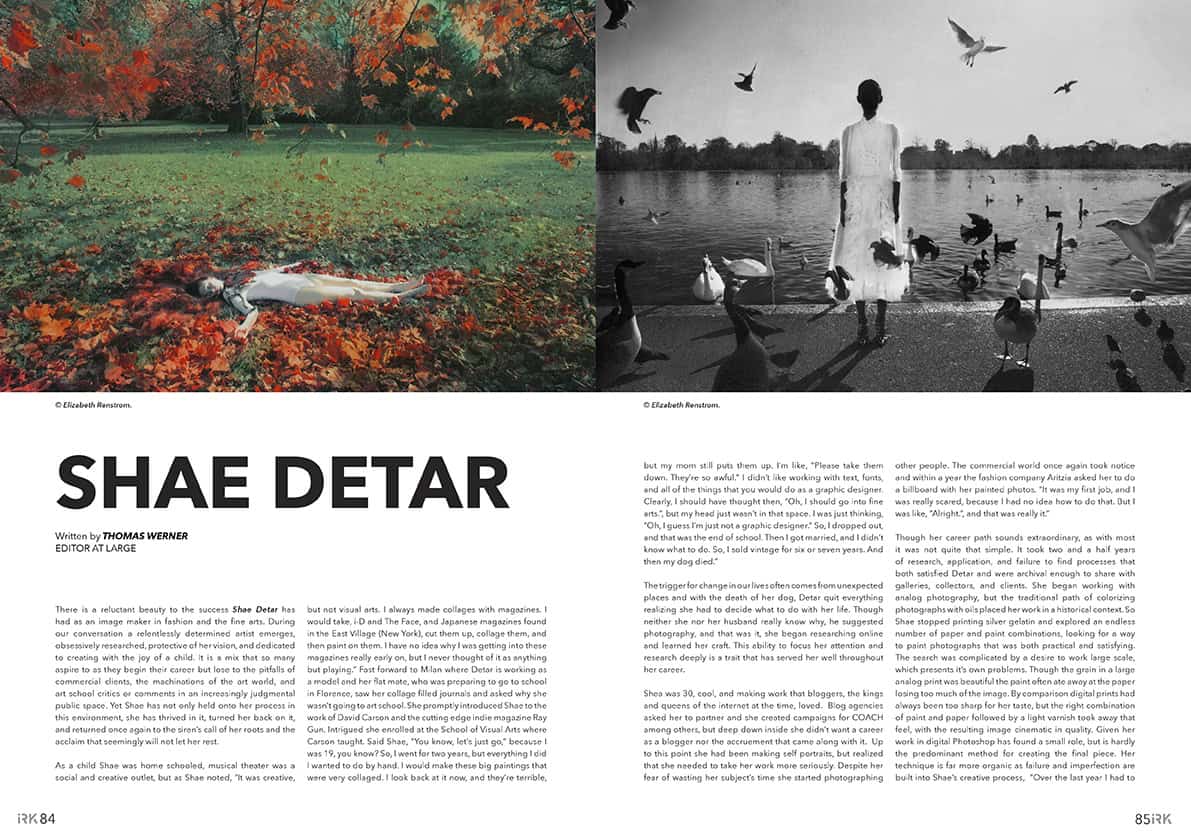
Partager cet article
Thomas is the author of the books The Business of Fine Art Photography, Routledge, New York, and The Fashion Image for Bloomsbury Publishing, London. As a creative consultant, Thomas works one on one with students, creatives, businesses, cultural institutions, and not for profits helping them refine their communications, and achieve their goals in fashion and the fine arts. He is also an Editor at Large for IRK Magazine, a member of the Santa Fe Council for the CENTER for Photographic Art, an instructor at the New York Film Academy and Santa Fe Workshops, founder of Thomas Werner Projects Podcast, and past Photography Program Director at Parsons School of Design in New York. He is the former owner of Thomas Werner Gallery in Manhattan’s Chelsea Art District, and a former National Board member and New York Chapter President for the American Society of Media Photographers. As well as a former Advisory Board Member for Ithaca College’s Executive Education Program and contributor to Adobe’s Lightroom Academy. As an exhibiting artist Thomas was represented by galleries in New York and Los Angeles, and his work reviewed in The New Yorker Magazine.
Werner also led a team developing a media and literacy web site and resource center in five languages, Spanish, French, Russian, Arabic and English for the United Nations Alliance of Civilizations/UNESCO. He has worked with the United States Department of State on cultural projects in Russia, and been a photography consultant for COACH and Rodale Publishing, among others. Thomas was a recurrent instructor at the United Nations Education First Summer School, and is now presenting workshops on effective message development, team management, innovation, education, visual communication, contemporary professional practices, on an international basis. With a series of presentations and workshops in 6 cities across China.
From 2005 – 2020 his research was Russia centric spending an average of 30 days a year there partnering with 32 cultural, educational, and governmental organizations to develop projects in 29 cities. The focus has been the introduction of contemporary education methodologies, and the development of creative cultures within the country. Russian partners have included; The State Hermitage Museum, the National Center of Contemporary Art, Perm Regional Government, The Moscow Biennale for Young Art, National Centre of Photography for the Russian Federation, The Central State Archive of Film, Photographic and Phonographic Documents, The Moscow Biennale, The Pro Arte Foundation, and others. He has curated exhibitions in the United States and abroad, including seven co-curated exhibitions at the State Hermitage Museum in Saint Petersburg, Russia. His private collection of Russian photographs and artifacts have been exhibited internationally. Thomaswernerprojects.com @Thomaswernerprojects IG
Lire ensuite

